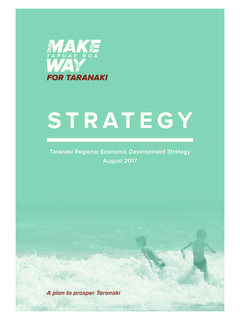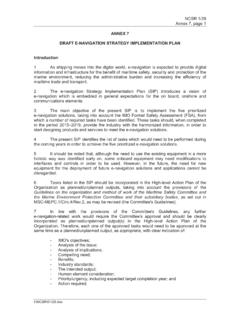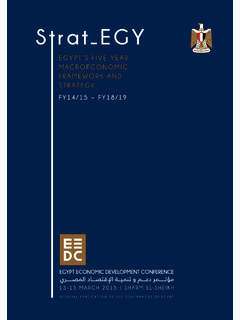Transcription of EMERGENCY RESPONSE FRAMEWORK - who.int
1 EMERGENCY RESPONSE FRAMEWORK WHO Library Cataloguing-in-Publication DataEmergency RESPONSE FRAMEWORK (ERF).. planning. medical services. Health Organization. Health 978 92 4 150497 3 (NLM classification: WB 105) World Health Organization 2013 All rights reserved. Publications of the World Health Organization are available on the WHO web site ( ) or can be purchased from WHO Press, World Health Organization, 20 Avenue Appia, 1211 Geneva 27, Switzerland (tel.: +41 22 791 3264; fax: +41 22 791 4857; e-mail: Requests for permission to reproduce or translate WHO publications whether for sale or for non-commercial distribution should be addressed to WHO Press through the WHO web site ( ).)
2 The designations employed and the presentation of the material in this publication do not imply the expression of any opinion whatsoever on the part of the World Health Organization concerning the legal status of any country, territory, city or area or of its authorities, or concerning the delimitation of its frontiers or boundaries. Dotted lines on maps represent approximate border lines for which there may not yet be full mention of specific companies or of certain manufacturers products does not imply that they are endorsed or recommended by the World Health Organization in preference to others of a similar nature that are not mentioned.
3 Errors and omissions excepted, the names of proprietary products are distinguished by initial capital reasonable precautions have been taken by the World Health Organization to verify the information contained in this publication. However, the published material is being distributed without warranty of any kind, either expressed or implied. The responsibility for the interpretation and use of the material lies with the reader. In no event shall the World Health Organization be liable for damages arising from its use. Printed in SwitzerlandWHO SEMERGENCY RESPONSE FRaMEWORkEMERGENCY RESPONSE FRAMEWORK EMERGENCY RESPONSE FRAMEWORK 4 WHO SEMERGENCY RESPONSE FRAMEWORkAbbreviations 6 Executive summary 7 Introduction 9 WHO s obligations under the International Health Regulations (2005) 9 WHO s obligations to the Inter-Agency Standing Committee (IASC)
4 10 WHO s commitment to its leadership role in EMERGENCY RESPONSE 11 The purpose of the EMERGENCY RESPONSE FRAMEWORK 12 critical assumptions for successful implementation of the ERF 13 WHO s core commitments in EMERGENCY RESPONSE 14 PART 1 Determining if an event has public health impact Monitoring events Triggers for event verification and event risk assessment Event verification and event risk assessment Using results from event risk assessments Recording events Closing events 17 PART 2 WHO s internal grading process for emergencies Purpose and parameters of grading Grade definitions Grading process Removal of grade 22 PART 3 WHO s Performance Standards in EMERGENCY RESPONSE WHO s Performance Standards Application of WHO s Performance Standards Reporting on Performance Standards 26 Contents5 WHO SEMERGENCY RESPONSE FRAMEWORkPART 4 WHO s four critical functions in EMERGENCY RESPONSE The four critical functions Delivering on the four critical
5 Functions Support to the four critical functions from the international level in emergencies 28 PART 5 WHO s Global EMERGENCY Management Team The purpose and composition of the GEMT The role of the GEMT in EMERGENCY RESPONSE 29 PART 6 Essential policies for optimizing WHO s EMERGENCY RESPONSE Surge policy Health EMERGENCY Leader policy No-regrets policy 33 PART 7 WHO s EMERGENCY RESPONSE Procedures 35 Table 1. Leadership 36 Table 2. Information 42 Table 3. Technical expertise 46 Table 4.
6 Core services 48 Annexes 50 Annex 1. ERF grading flowchart 50 Annex 2. Country-level timeline for RESPONSE 52 Annex 3. WHO s obligations under an IASC Level 3 EMERGENCY 54 Annex 4. WHO s Performance Standards in protracted emergencies 56 Annex 5. WHO s commitment to institutional readiness 57 Annex 6. WHO s commitment to EMERGENCY risk management 586 WHO SEMERGENCY RESPONSE FRAMEWORKA bbreviationsCERF Central EMERGENCY RESPONSE Fund ERF EMERGENCY RESPONSE FRAMEWORK ERT EMERGENCY RESPONSE Team (country level)ERP EMERGENCY RESPONSE Procedure EST EMERGENCY Support Team (international level)
7 ESTL EMERGENCY Support Team Leader GEMT Global EMERGENCY Management Team GEMT-R Global EMERGENCY Management Team for ResponseGEN Global EMERGENCY NetworkHCC Health Cluster CoordinatorHCT Humanitarian Country TeamHL Health EMERGENCY Leader HQ WHO headquartersHWCO Head of WHO Country Office IASC Inter-Agency Standing Committee IHR International Health Regulations (IHR) (2005)RO WHO regional officeWCO WHO country office WRC WHO RESPONSE Coordinator7 WHO SEMERGENCY RESPONSE FRAMEWORKE xecutive summary WHO s Member States face a broad range of emergencies resulting from various hazards and differing in scale, complexity and international consequences.
8 These emergencies can have extensive political, economic, social and public health impacts, with potential long-term consequences sometimes persisting for years after the EMERGENCY . They may be caused by natural disasters, conflict, disease outbreaks, food contamination, or chemical or radio-nuclear spills, among other hazards. They can undermine decades of social development and hard-earned health gains, damage hospitals and other health infrastructure, weaken health systems and slow progress towards the Millennium Development Goals (MDGs).
9 Preparing for and responding effectively to such emergencies are among the most pressing challenges facing the international community. WHO has an essential role to play in supporting Member States to prepare for, respond to and recover from emergencies with public health consequences. WHO also has obligations to the Inter-Agency Standing Committee (IASC) as Health Cluster Lead Agency, to the International Health Regulations (2005) and to other international bodies and agreements related to EMERGENCY RESPONSE .
10 The purpose of this EMERGENCY RESPONSE FRAMEWORK (ERF) is to clarify WHO s roles and responsibilities in this regard and to provide a common approach for its work in emergencies. Ultimately, the ERF requires WHO to act with urgency and predictability to best serve and be accountable to populations affected by emergencies. First, the ERF sets out WHO s core commitments in EMERGENCY RESPONSE which are those actions that WHO is committed to delivering in emergencies with public health consequences to minimize mortality and life-threatening morbidity by leading a coordinated and effective health sector RESPONSE .















